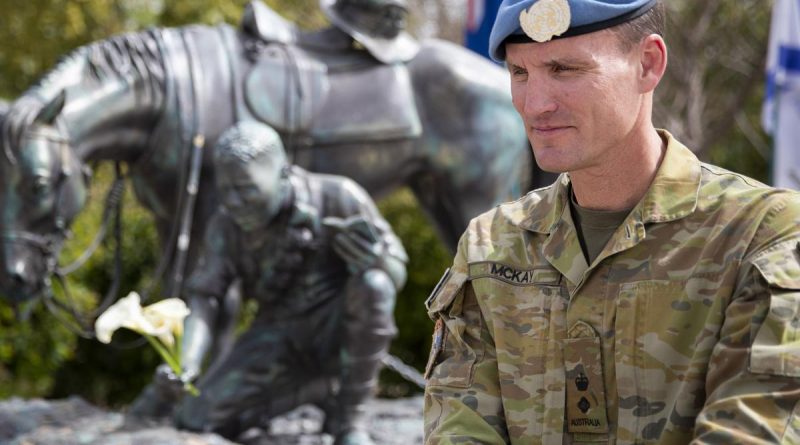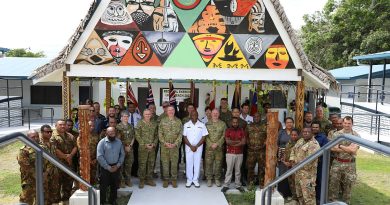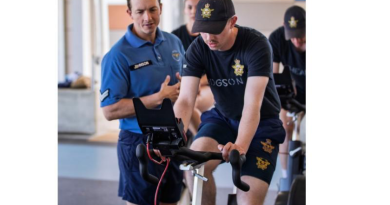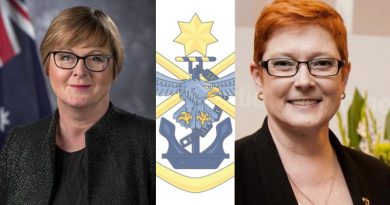Bravery of Light Horse cavalry charge recognised
Share the post "Bravery of Light Horse cavalry charge recognised"

How brave must someone be to charge on horseback at night when the ground can’t be seen?
A clue to the answer lies with an Australian Light Horse memorial tucked away inside Kinneret Academic College grounds, near where the Australians’ sacrifice at the Battle of Semakh during World War I is honoured.
CAPTION: Lieutenant Colonel Chris McKay at the memorial for the Battle of Semakh, at Kinneret Academic College, Israel. Story by Petty Officer Lee-Anne Cooper. Photo by Petty Officer Lee-Anne Cooper.
Australian Army officer Lieutenant Colonel Chris Mckay is with the United Nations Truce Supervision Organisation (UNTSO) in the Middle East, serving with Chief Observer Group Golan – Tiberia.
His duties have allowed him to visit the memorial, where he reflected on the bravery of those it commemorated.
“I’m cavalry, and not knowing it was there before posting to Israel, I had mixed emotions visiting the memorial the first time,” Lieutenant Colonel Mckay said.
“It’s a heroic episode in the history of the Australian Army. This was one of the last cavalry charges in modern warfare.”
On September 25, 1918, men from the 11th Regiment and one squadron of the 12th rode for two hours with orders to take Semakh junction, the strategic gateway to the whole of Galilee, positioned on the Damascus railway line.
At 4.30am, the force advanced in absolute darkness, and as the enemy opened fire a squadron commander shouted, “What orders, colonel?”
“Form line and charge the gun,” Lieutenant Colonel John Parsons replied.
In response, the light horse did the unthinkable and charged towards the flashing muzzles before them.
Adding to the danger, the Germans had added machine gunners to the small Turkish garrison, with the guns concealed in railway trucks and carriages at the station.
Entrenched in the stone buildings of the station house, the enemy had orders to hold the position at all costs.
As dawn neared, hand-to-hand combat took place at the last stronghold – the station house.
By 5.30am it was over. Horses lay scattered across the battlefield and the dead were lined up in rows covered in Army blankets: 14 Australians were killed and 29 wounded, with 61 horses dead and 27 injured, a loss of nearly half the horses.
98 enemy were killed and 364 captured, of whom 150 were German.
The memorial at Semakh was designed by Australian artist Jennifer Marshall. It depicts an Aboriginal trooper Jack Pollard, of the 11th Light Horse Regiment, tending to the grave of a fallen mate.
The 20th reinforcement contingent of the 11th Light Horse Regiment was made up mostly of Aboriginal members.
The council for the Preservation of Heritage Sites in Israel and the Kinneret Academic College, built and maintain the area.
“Ziv Ofir and a group of volunteers look after it and they are passionate about it,” Lieutenant Colonel McKay said.
“You can see the amount of effort and funding that goes into the development and conservation of the sight.”


CAPTION: The replica rail car, which was added to the memorial site in April.
In early April a new exhibit was unveiled – a replica of a railway car powered by an aeroplane propeller engine. The replica is to scale, measuring 460cm long and 210cm wide.
“I have never seen anything like it before,” Lieutenant Colonel Mckay said.
In 1918, Jewish inventor Baruch Katinka was tasked with developing a small rail car that would enable pilots to travel to Haifa.
The engine that Katinka received was 160 horsepower – far exceeding that needed for a small rail car.
On its maiden voyage, the rail car reached speeds of more than 80km/h. With minor modifications to change the drive, three more were commissioned.
The story is told that after the German’s retreated, Australian pilots heard there was an abandoned plane engine-powered rail car with propeller propulsion, and decided to investigate.
“You can just imagine it. These Australian’s finding it and deciding to see how fast it could really go,” Lieutenant Colonel Mckay said.
Taking the rail car for a joyride, the Australian’s soon discovered there were no brakes. As it hurtled around a curve on the track, the rail car apparently flipped.
.
.

.
.
Share the post "Bravery of Light Horse cavalry charge recognised"






I know Lieutenant Colonel Chris McKay , I met his mum in Arizona in the USA, and his brother Paul McKay.
If anyone has his info, please pass on my email address.
Proud of his service in Australia!